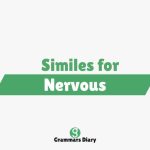“I’m all ears” is an informal expression people often use to show that they are fully listening and ready to give someone their full attention, especially when expecting something interesting, important, or meaningful. When someone says, “I’m all ears,” they’re inviting you to speak freely, showing that they’re genuinely curious or concerned about what’s going to be said next.
Although this phrase is friendly and conversational, there are many other expressions that can be used in both formal and informal situations to convey the same readiness to listen with full attention. These alternatives not only add variety to your speech and writing but also allow you to match tone and formality depending on the setting. This article dives into 25 thoughtful alternatives to “I’m all ears” that you can use across professional, social, or casual conversations to show attentiveness, openness, and respect.
Other Ways to Say “I’m All Ears”
1. You have my full attention
Example: “Go ahead, you have my full attention.”
Meaning: A straightforward way of showing complete focus on the speaker, often used to convey respect or seriousness.
Usage: Suitable in both personal and professional conversations where attentiveness needs to be emphasized.
2. I’m listening closely
Example: “Tell me everything—I’m listening closely.”
Meaning: Suggests you are concentrating fully and not missing any details.
Usage: Common in discussions that require focus or where the other person needs to feel truly heard.
3. Speak freely
Example: “Speak freely—I’m all ears.”
Meaning: Invites someone to talk without fear of judgment or interruption.
Usage: Works well in open conversations, supportive dialogue, or when encouraging honesty.
4. I’m tuned in
Example: “Don’t worry, I’m tuned in to what you’re saying.”
Meaning: A casual way to express engagement and mental focus.
Usage: Often used in informal contexts among peers, friends, or colleagues.
5. You’ve got my ear
Example: “You’ve got my ear, go ahead.”
Meaning: Suggests someone has your attention and you’re ready to hear what they need to share.
Usage: Friendly and idiomatic, often used when giving someone space to talk.
6. Go ahead, I’m listening
Example: “Go ahead, I’m listening.”
Meaning: A clear and polite way to let someone know you’re ready to hear them out.
Usage: Common across both professional and personal interactions.
7. I’m paying attention
Example: “Don’t worry, I’m paying attention to every word.”
Meaning: Reinforces that the listener is fully focused and not distracted.
Usage: Great in any conversation where it’s important to assure the speaker they’re being heard.
8. You’ve got my full attention
Example: “You’ve got my full attention—tell me what’s going on.”
Meaning: Expresses that you’re not just listening passively, but are fully present.
Usage: Strong in serious conversations or when dealing with sensitive topics.
9. I’m all in
Example: “I’m all in, tell me what’s on your mind.”
Meaning: A more emotional or enthusiastic version of “I’m all ears,” showing commitment to the conversation.
Usage: Casual and expressive, good for conversations among close friends or teams.
10. Let’s hear it
Example: “Let’s hear it—what did they say?”
Meaning: A casual invitation to share something, often used when someone is eager to hear.
Usage: Suitable for informal conversations, especially when anticipating gossip, news, or updates.
11. Tell me everything
Example: “I’m dying to know—tell me everything.”
Meaning: Encourages the other person to provide all details without holding back.
Usage: Used in personal conversations with a sense of urgency or curiosity.
12. I’m focused on what you’re saying
Example: “Go on—I’m focused on what you’re saying.”
Meaning: Expresses that the listener is making an effort to absorb the speaker’s message carefully.
Usage: Ideal in conversations requiring emotional support or serious attention.
13. I’m here for you
Example: “I’m here for you—whatever you need to say, I’m listening.”
Meaning: Goes beyond just listening, offering emotional availability and presence.
Usage: Often used in comforting or supportive conversations.
14. I’m taking it all in
Example: “Don’t worry—I’m taking it all in.”
Meaning: Suggests that you are not only listening but also absorbing and reflecting on what’s being said.
Usage: Useful in thoughtful or emotionally heavy conversations where someone wants to be understood deeply.
15. Lay it on me
Example: “You’ve got something to say? Lay it on me.”
Meaning: A very casual, open-ended way of saying you’re ready to hear whatever the speaker has to share.
Usage: Most appropriate in laid-back, informal discussions among friends or peers.
16. My ears are open
Example: “Whatever it is, my ears are open.”
Meaning: An idiomatic way to express attentiveness and willingness to listen.
Usage: Can be used in both casual and semi-formal conversations.
17. I’m wide open to hear you out
Example: “Take your time—I’m wide open to hear you out.”
Meaning: Suggests emotional and mental openness, showing you’re ready to receive their thoughts without bias.
Usage: Ideal in supportive, non-judgmental environments.
18. I’m all attention
Example: “Start from the beginning—I’m all attention right now.”
Meaning: A creative way to say that your attention is completely focused on the speaker.
Usage: Useful in both professional and serious personal conversations.
19. I’m alert and listening
Example: “This sounds important—I’m alert and listening.”
Meaning: Indicates a state of heightened awareness and readiness to receive crucial information.
Usage: Effective in critical or urgent discussions.
20. I’m receptive
Example: “You can speak your mind—I’m receptive.”
Meaning: Emphasizes open-mindedness and a non-defensive listening posture.
Usage: Appropriate in discussions involving feedback, emotions, or honesty.
21. I’m giving you my undivided attention
Example: “Take your time—I’m giving you my undivided attention.”
Meaning: Shows deep focus and respect for the speaker, with zero distractions.
Usage: Great for moments where the speaker needs reassurance that they’re being heard.
22. You have the floor
Example: “You have the floor—go ahead.”
Meaning: A formal way to offer someone the chance to speak freely.
Usage: Useful in meetings, debates, or structured conversations.
23. I’m present with you
Example: “I’m present with you—whatever you want to share, I’m listening.”
Meaning: Expresses mindful and compassionate listening, showing care and empathy.
Usage: Particularly meaningful in emotional or therapeutic conversations.
24. My attention is all yours
Example: “I cleared my schedule—my attention is all yours.”
Meaning: Strongly signals that you’re mentally and physically available to listen without interruption.
Usage: Best in personal settings, such as conversations with family, partners, or close friends.
25. I’m here to listen, not to judge
Example: “Say whatever you need—I’m here to listen, not to judge.”
Meaning: Emphasizes emotional safety and supportiveness, inviting the speaker to be open without fear.
Usage: Crucial in sensitive discussions involving vulnerability or difficult truths.
When to Use Different “I’m All Ears” Alternatives
In Formal and Professional Settings
In professional environments like meetings, presentations, or feedback sessions, it’s often better to opt for clear and respectful phrases such as “You have my full attention,” “I’m listening closely,” or “You have the floor.” These expressions maintain a tone of professionalism while encouraging open communication.
In Friendly or Informal Conversations
In casual settings—like talking with friends, family, or teammates—playful phrases such as “Lay it on me,” “Tell me everything,” or “Let’s hear it” work well to establish a relaxed and engaging tone. These idioms add personality and warmth to everyday conversations.
In Therapeutic or Supportive Contexts
When someone is being emotionally vulnerable, words matter even more. Expressions like “I’m here to listen, not to judge,” “I’m present with you,” or “You have my full attention” create a sense of emotional safety and support. These alternatives help the speaker feel validated and cared for.
Conclusion
“I’m all ears” is a friendly and inviting way to show someone that you’re paying attention, but it’s far from your only option. Whether you’re navigating a professional discussion, catching up with a friend, or providing emotional support, there’s a wide range of phrases you can use to express attentiveness. Choosing the right alternative not only enriches your communication but also helps build stronger and more meaningful interactions based on tone, context, and relationship.
If you’re looking to expand your conversational vocabulary further, sites like Thesaurus.com offer plenty of inspiration to help you listen better—not just in words, but in intent.
FAQs
What does “I’m all ears” mean?
“I’m all ears” means that someone is paying close attention and is ready or eager to listen to what you have to say.
Is “I’m all ears” formal or informal?
It’s typically considered informal. While it’s friendly and approachable, more formal alternatives may be better suited in professional or structured contexts.
Can “I’m all ears” be replaced in serious conversations?
Yes, alternatives like “You have my full attention,” “I’m listening closely,” or “I’m here to listen, not to judge” are better suited for more serious or sensitive discussions.











